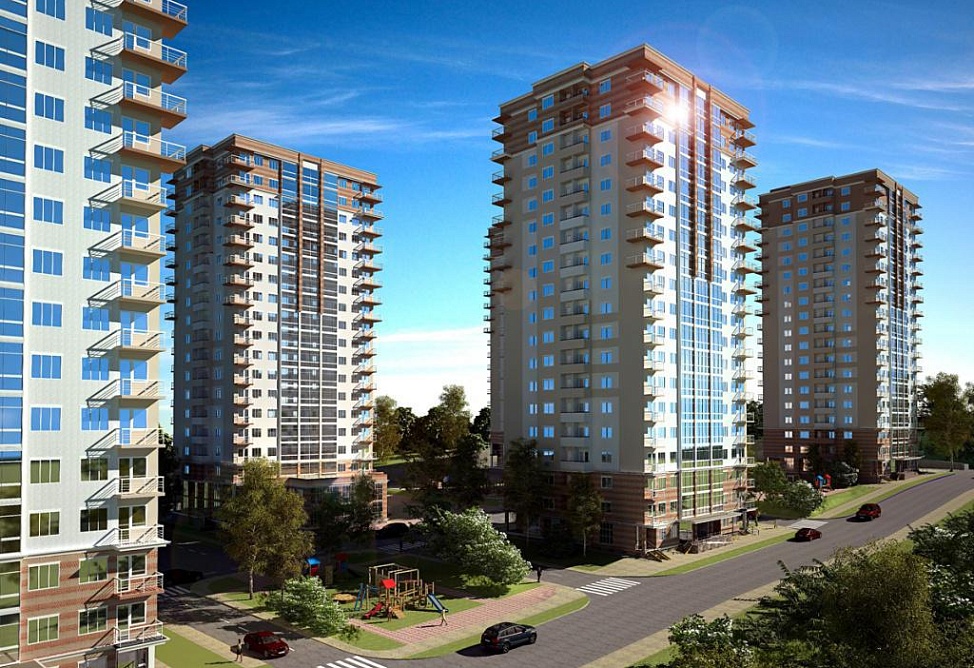Virtually all newly-built buildings in Armenia are seismic resistant
26.01.2016,
18:08
Almost all buildings being built now in Armenia are earthquake-resistant, the deputy chief of the Armenian Rescue Service Nikolay Grigoryan told a news conference today.

YEREVAN, January 26. /ARKA/. Almost all buildings being built now in Armenia are earthquake-resistant, the deputy chief of the Armenian Rescue Service Nikolay Grigoryan told a news conference today.
According to him, one of the reasons why the consequences of the Spitak earthquake that killed 25,000 people in 1988 and left 500,000 people homeless were so tragic, was the inaccurate assessment of seismic resistance of buildings and possible threats.
In his words, the buildings were constructed to withstand 7 magnitude earthquake, while the real threat was higher. He stressed that there are many buildings across the country now that meet the outdated criteria.
"However, virtually all the buildings that are being built in Armenia now are seismic resistant as they are built based on the new requirements and criteria," Grigoryan said.
Armenia is exposed to almost all possible natural disasters except for tsunamis. According to World Bank, earthquakes cause 3% damage to Armenia’s GDP per year. Located on the Alps-Himalaya seismic zone, Armenia has historically been prone to earthquakes. Floods in the country also pose serious danger.
For instance, flooding in 2010 caused an estimated US$ 10 million in damage. However, this list of natural disasters is not complete - Armenia also faces other hazards such as droughts, hail storms and landslides.
Earlier this month deputy urban planning minister Armen Ghularyan said in 2016 the government will develop a program to improve the seismic resistance of buildings.
"Given the high seismic activity in our region and the level of urbanization the ministry of urban development is paying special attention to the seismic resistance of buildings and updating of the normative and technical documentation,' said Ghularyan.
He said the ministry, in particular, has developed a program to increase the level of earthquake-resistance of schools to be accomplished before 2030. -0-
According to him, one of the reasons why the consequences of the Spitak earthquake that killed 25,000 people in 1988 and left 500,000 people homeless were so tragic, was the inaccurate assessment of seismic resistance of buildings and possible threats.
In his words, the buildings were constructed to withstand 7 magnitude earthquake, while the real threat was higher. He stressed that there are many buildings across the country now that meet the outdated criteria.
"However, virtually all the buildings that are being built in Armenia now are seismic resistant as they are built based on the new requirements and criteria," Grigoryan said.
Armenia is exposed to almost all possible natural disasters except for tsunamis. According to World Bank, earthquakes cause 3% damage to Armenia’s GDP per year. Located on the Alps-Himalaya seismic zone, Armenia has historically been prone to earthquakes. Floods in the country also pose serious danger.
For instance, flooding in 2010 caused an estimated US$ 10 million in damage. However, this list of natural disasters is not complete - Armenia also faces other hazards such as droughts, hail storms and landslides.
Earlier this month deputy urban planning minister Armen Ghularyan said in 2016 the government will develop a program to improve the seismic resistance of buildings.
"Given the high seismic activity in our region and the level of urbanization the ministry of urban development is paying special attention to the seismic resistance of buildings and updating of the normative and technical documentation,' said Ghularyan.
He said the ministry, in particular, has developed a program to increase the level of earthquake-resistance of schools to be accomplished before 2030. -0-



